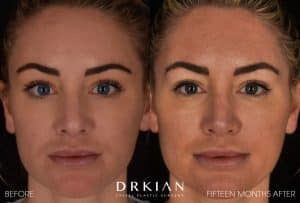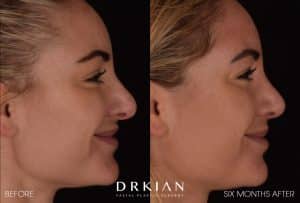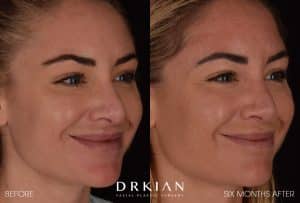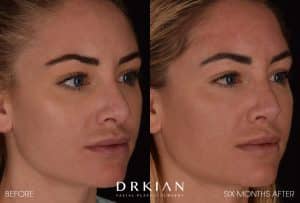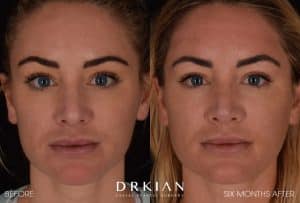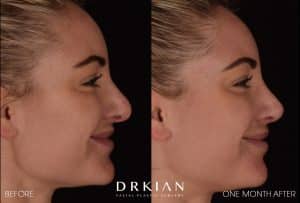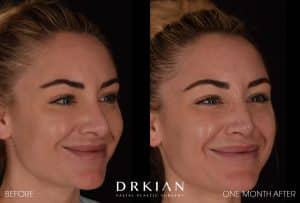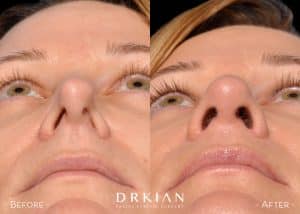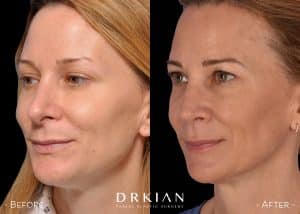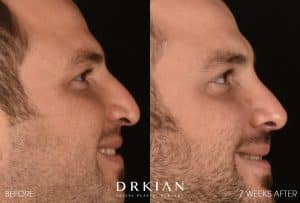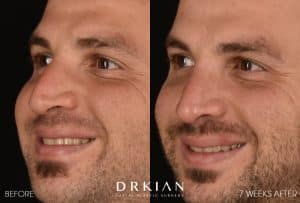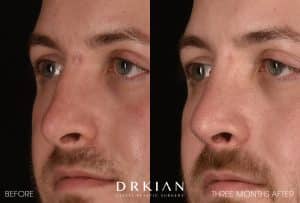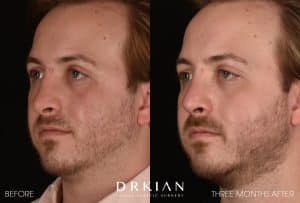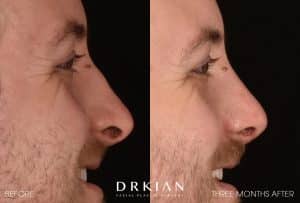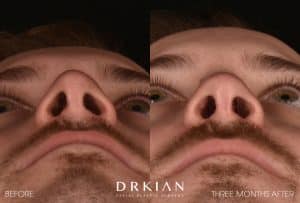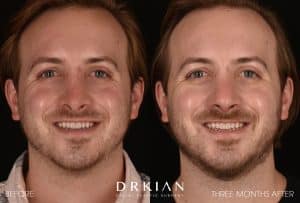
Revision Rhinoplasty
What is Revision Rhinoplasty?
Benefits
The greatest benefit of revision rhinoplasty is the ability to correct the damage done from a previous surgery. Some of these specific benefits include:
- Reshaping the nose
- Correcting nostrils
- Improving breathing
- Restoring the nasal bone area
What To Expect After
The recovery process from revision rhinoplasty takes several weeks to complete depending on the extent of the procedure. During the first week, the nose is packed and splinted to allow the initial healing to take place. It is important to avoid sneezing, if possible, and any other direct impact on the nose. Ice packs can be used to relieve discomfort.
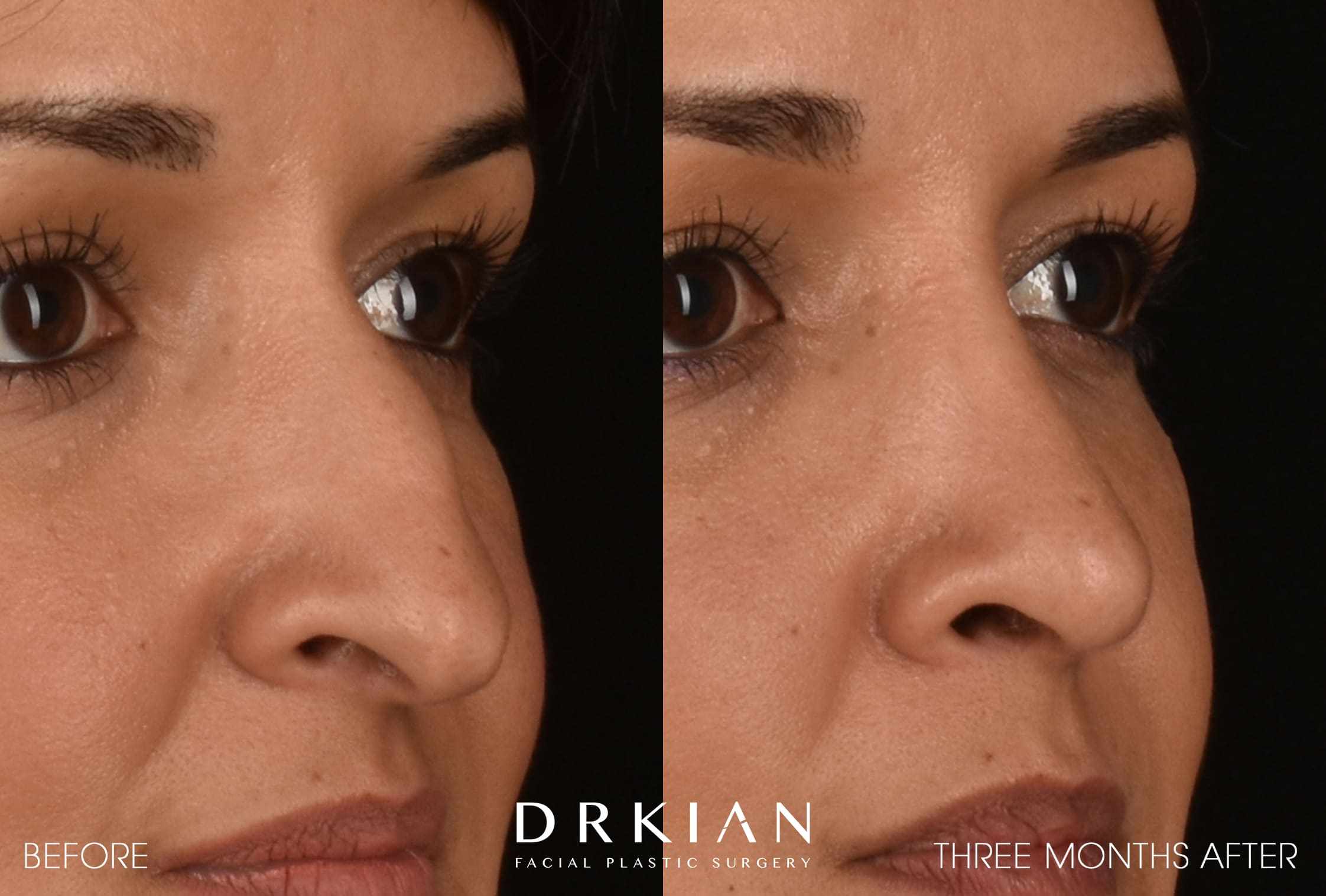
Once the packing and stitches are removed, patients may return to light activities and work; however, strenuous activities including exercise and heavy lifting should be avoided for several weeks. The full recovery from revision rhinoplasty takes several weeks.
Revision Rhinoplasty
Frequently Asked Questions
Q: WHO IS AN IDEAL CANDIDATE FOR REVISION RHINOPLASTY?
Q: HOW DO I PREPARE FOR A REVISION RHINOPLASTY?
A: Prior to having revision rhinoplasty, it is important to schedule a consultation with your plastic surgeon to discuss what you don’t like about your rhinoplasty results. Together you and your surgeon can discuss ideal results. During your consultation, you will get a detailed list of instructions before your surgery to ensure you are fully prepared.
Q: WHAT HAPPENS DURING THE APPOINTMENT?
Q: HOW LONG DOES A REVISION RHINOPLASTY PROCEDURE TAKE?
A: Most revision rhinoplasty procedures take two to three hours to complete, depending on the amount of work to be done. Once complete, you are taken to a recovery area where you come out of your anesthesia. You can go home with the person who accompanied you to your procedure.
Q: WHEN WILL I SEE THE RESULTS?
Q: HOW LONG WILL MY REVISION RHINOPLASTY RESULTS LAST?
A: The results from revision rhinoplasty are permanent; however, if a patient becomes dissatisfied with their results, further revision surgeries are possible. We encourage patients to discuss their goals and expectations thoroughly with their surgeon so that no additional procedures are necessary.
Q: WHAT IS THE COST OF A REVISION RHINOPLASTY?
Q: WHY REJUVA?
Q: HOW DOES A RHINOPLASTY CORRECT BREATHING ISSUES?
A: Breathing is one of the most fundamental activities of life. If we cannot breathe, we cannot live. Due to birth defects or trauma, our ability to breathe through our nose can be impaired, often because the air pathway is physically blocked. If breathing problems go unaddressed, they can result in serious problems, including:
- Chronic headaches
- Increased risk of cardiovascular conditions
- Impairments to daily life (not being able to walk up the stairs, run, etc.)
- Increased risk of dizziness and fainting
A rhinoplasty corrects breathing issues by straightening the nose and clearing the air canal, allowing you to breathe freely again.
Q: WILL I HAVE SCARS AFTER?
Q: What are the material options for a bone graft?
A: Bone grafts can be harvested from the septum, ear, and rib. We are able to trim grafts from either one’s self or a donor (cadaver).
Q: Does the body ever reject the donor tissue?
A: There are rare occasions that the nose will reject a graft which can be from one’s self or from a cadaver. The cadaver is used judicially and only in areas that minimize the risk of rejection, infection, or warping.
Q: Are there any complications with the donor cartilage?
A: The same complications exist as using any source of cartilage which include graft rejection, infection, warping, and the necessity for removal or modification.
Q: How long will the donor cartilage last?
A: The cartilage grafts are intended to last permanently.
Q: If I use my own will it last longer?
A: There is not data or evidence to suggest that one’s own rib cartilage will last any longer or shorter than a cadaver rib graft. Cartilage does not have an inherent blood supply—no matter what the source—so surrounding the cartilage with healthy tissue that will form a permanent envelope around the graft is an important part of well-done revision rhinoplasty.
